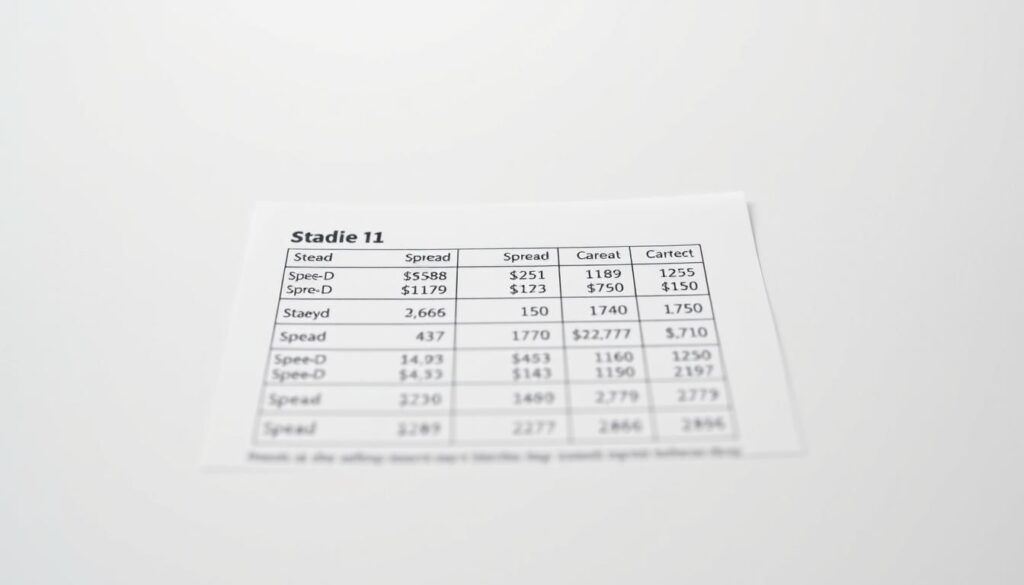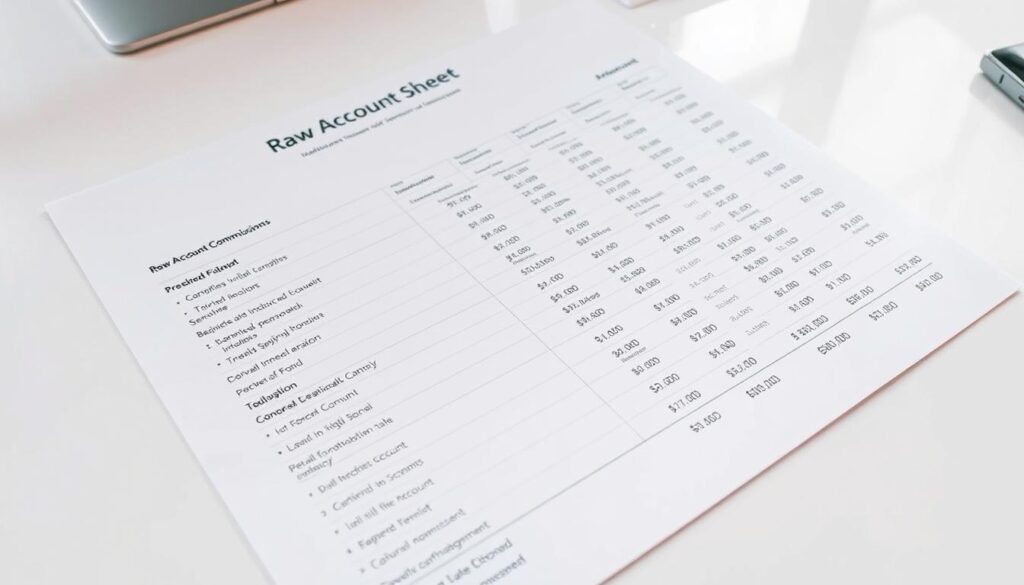Understanding overnight funding costs is critical for active traders. This guide breaks down how swaps function and their role in managing expenses when holding positions beyond market hours.
FP Markets operates under strict oversight from regulators like ASIC and CySEC, ensuring transparent pricing. Traders can choose between two account models: the Standard account with no commission or the Raw account with tighter spreads. Both options cater to different strategies and risk appetites.
Swap rates vary by instrument and market conditions. These fees reflect the interest rate differential between currencies or assets in a trade. By analyzing these costs upfront, traders can better plan their positions and avoid unexpected charges.
This article compares fee structures across account types and explains how to calculate potential costs. It also explores why low trading expenses matter for long-term profitability in competitive markets. Readers will gain practical insights to optimize their approach to overnight positions.
Introduction to FP Markets and Their Trading Environment
For nearly two decades, this multi-asset broker has delivered professional-grade tools to traders worldwide. Headquartered in Sydney, it maintains offices in Cyprus and Saint Vincent and the Grenadines, ensuring round-the-clock support across major time zones.
The platform grants access to over 10,000 instruments, including:
- Forex currency pairs
- Global stock indices
- Cryptocurrencies
- Commodities like gold and oil
Advanced execution speeds and institutional-grade liquidity define the trading experience. Users can choose between MetaTrader platforms or proprietary solutions, all featuring real-time analytics and risk management tools.
With 40+ industry awards for execution quality and customer service, the broker stands out in competitive markets. Strict regulation by ASIC and CySEC guarantees transparent pricing and segregated client funds, providing peace of mind for active traders.
Exploring FP Markets Swap Fundamentals

Effective trading strategies account for swap rates influencing overnight holdings. These fees apply when keeping trades open beyond the daily cutoff time, reflecting the cost of borrowing assets. Three-day swaps often occur on Wednesdays to cover weekend exposure.
Defining Key Concepts
Swap rates represent interest differences between two currencies. When holding a position overnight:
- Traders pay or receive funds based on rate gaps
- Higher-yielding currencies may generate credits
- Central bank policies directly impact calculations
Cost Implications for Traders
Extended positions face daily charges that compound over time. A long EUR/USD trade could cost £2.50 nightly per standard lot if euro rates fall below dollar rates. These fees vary across instruments and economic conditions.
Platforms update rates automatically at 00:00 server time. Savvy traders review swap tables before entering trades, especially for strategies requiring multi-day holds. Proper planning prevents unexpected deductions from profits.
Standard Account Costs and Spread Overview

Traders seeking simplicity often choose Standard Accounts for predictable pricing. This model integrates all fees into the spread, removing separate commission charges. It’s ideal for those who prefer straightforward cost calculations without complex fee structures.
Understanding Built-In Spread Costs
The spread represents the primary expense in this account type. For example, a EUR/USD trade with a 1.0 pip spread costs $12 per standard lot. Traders multiply the spread value (0.00012) by 100,000 units to determine this fee.
Liquidity from top financial institutions enables competitive pricing. The broker adds a 1-pip markup to raw spreads, covering operational expenses while maintaining affordability. This approach benefits casual traders and those with smaller balances.
Transparency remains a key advantage. Users know exact costs before executing trades, avoiding unexpected charges. The model suits strategies requiring quick entries and exits, as all expenses appear in the spread.
Raw Account Commissions and Fee Structure

Active traders seeking precise cost control often gravitate toward the Raw account’s transparent pricing model. Unlike spread-based accounts, this structure separates execution costs from commissions, offering clarity for frequent trading strategies.
Commission Rates and Trade Sizes
The commission structure charges $3.00 per standard lot (100,000 units) per side, totaling $6.00 for complete trades. Smaller positions scale proportionally:
- Mini lots (10,000 units): $0.30 per side
- Micro lots (1,000 units): $0.03 per side
This tiered system lets traders calculate exact fees before execution. A 5-standard-lot position would incur $15.00 when opening and another $15.00 at closure, regardless of market spreads.
Raw accounts combine ultra-tight spreads starting at 0.0 pips with predictable commission costs. High-volume traders often find this model cheaper than spread-inclusive alternatives, particularly when executing multiple daily trades across major currency pairs.
Comparing Standard and Raw Account Trading Costs

Traders often face a dilemma: simplicity versus savings in fee models. The Standard account integrates costs into spreads, while the Raw account separates commissions from tighter pricing. Understanding this distinction helps optimize expenses based on trading frequency and strategy.
For EUR/USD trades, a Standard account typically charges $24 per round-turn lot (1.2 pip spread). The Raw alternative totals $8 – combining 0.1 pip spreads ($2) and $6 in commissions. This represents a 67% cost reduction, making high-volume strategies significantly more affordable.
Three factors determine which model works best:
- Trade frequency – Raw accounts save money for 10+ monthly trades
- Position size – Standard suits smaller, infrequent transactions
- Market volatility – Fixed commissions avoid spread-related surprises
While beginners appreciate the Standard account’s predictable spreads, active traders benefit from Raw’s transparent structure. Scalpers executing 50+ daily lots could save over $800 weekly on major pairs. Both options provide distinct advantages depending on individual goals and risk tolerance.
Breaking Down Overnight Funding and Rollover Fees

Overnight funding costs shape trading outcomes for positions held beyond daily close times. These fees activate precisely at 00:00 platform time, aligning with global financial markets’ settlement cycles. Traders encounter either charges or credits based on interest rate differences between currency pairs.
Three-day rollovers occur midweek to account for weekend closures. Wednesday sessions apply triple rates – covering Saturday and Sunday when exchanges remain inactive. This adjustment prevents gaps in financing costs despite market downtime.
Interest differentials determine fee directions. Holding a currency with higher central bank rates often generates credits, while lower-yielding ones incur charges. These rates fluctuate based on economic policies and interbank lending conditions.
Key factors influencing overnight costs:
- Trade duration beyond cutoff times
- Currency pair interest gaps
- Market closures during holidays
Savvy traders monitor swap tables and economic calendars to anticipate charges. Proper timing helps avoid triple-rate windows or leverage positive credits. This knowledge proves vital for strategies involving multi-day positions in fast-moving markets.
Understanding fp markets swaps and Their Effect on Positions

Daily swap charges can make or break trading strategies holding positions overnight. These fees vary dramatically across currency pairs, creating opportunities and risks depending on trade direction.
The EUR/USD pair shows this contrast clearly. Long positions cost $5.05 nightly per standard lot, while short trades earn $1.23. This difference stems from interest rate gaps between the Eurozone and US economies.
Three key patterns emerge across major pairs:
- GBP/USD charges both sides (-$1.91 long/-$2.14 short)
- USD/CHF rewards long positions (+$2.74)
- AUD/USD penalizes all holds (-$2.15 long/-$1.26 short)
Central bank decisions directly influence these rates. Traders monitoring policy changes can anticipate shifts in swap costs. For example, USD/CHF’s positive rate reflects Switzerland’s lower interest environment compared to the US.
Successful traders factor these daily expenses into risk calculations. Those holding positions for weeks might see costs outweigh potential gains. Regular review of updated rate tables helps avoid surprises, especially during volatile market periods.
Detailed Look at Swap Fee Calculations
Accurate swap fee calculations form the backbone of cost-effective trading strategies. Traders must understand how these costs scale across different position sizes and currency combinations to maintain profitability.
Examples with EUR/USD and Other Currency Pairs
The EUR/USD pair demonstrates swap mechanics clearly. A standard lot (100,000 base currency units) incurs fees based on current interest differentials. For instance, holding this pair long might cost $5 nightly, while short positions could earn $1.20.
Other currency pairs follow similar rules with varied rates. GBP/USD typically charges both sides due to narrower rate gaps. USD/CHF often rewards long positions, reflecting Switzerland’s lower interest environment compared to the US.
Impact on Micro and Standard Lots
Micro lots reduce exposure dramatically. A 1.2-pip spread on EUR/USD costs $0.12 per 1,000 units instead of $12 for standard lots. This 99% cost difference makes overnight positions accessible for smaller accounts.
Calculations remain proportional across sizes. Multiply the swap rate by your lot count – whether trading 10 standard lots or 500 micro positions. This predictability helps traders budget precisely for multi-day holds.
Mastering these calculations enables smarter trade duration decisions. Regular reviews of updated rate tables prevent surprises, particularly during central bank policy shifts affecting EUR and USD valuations.



